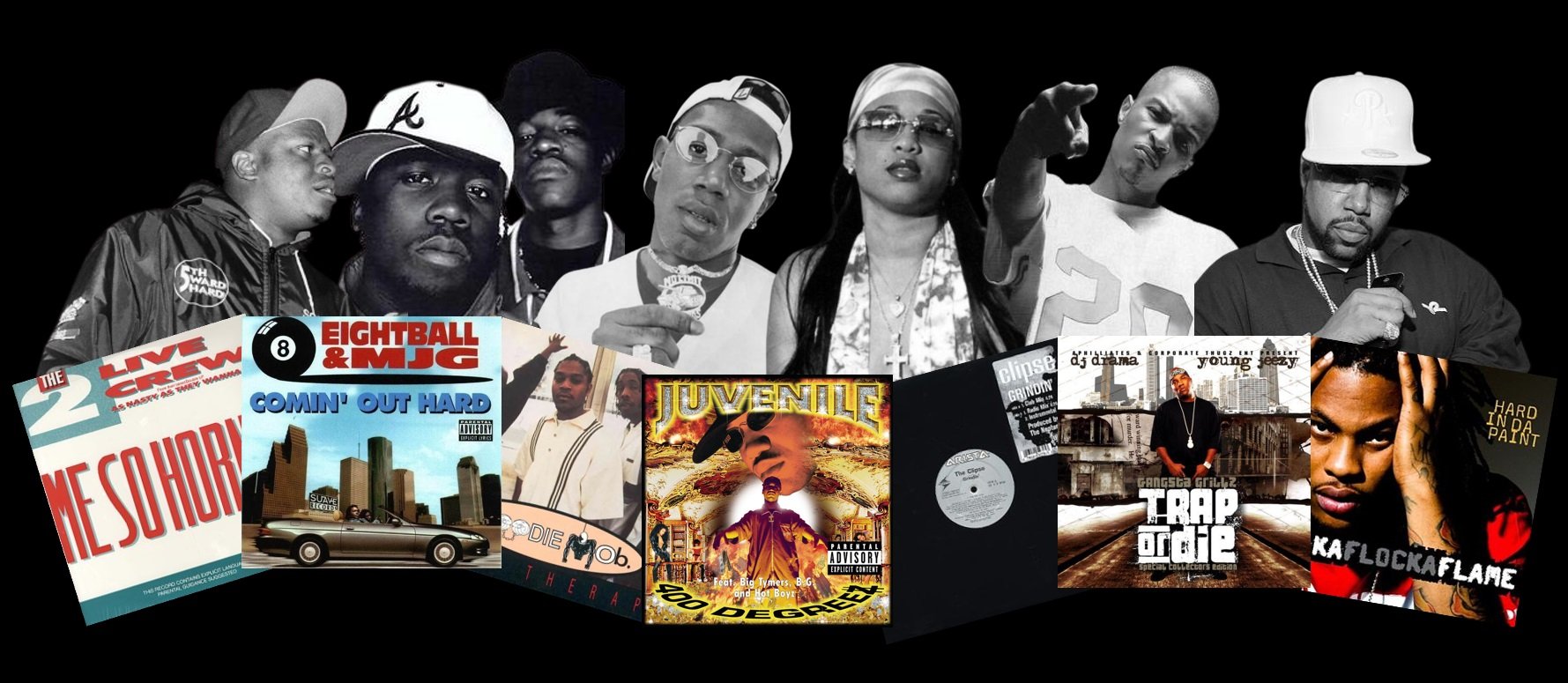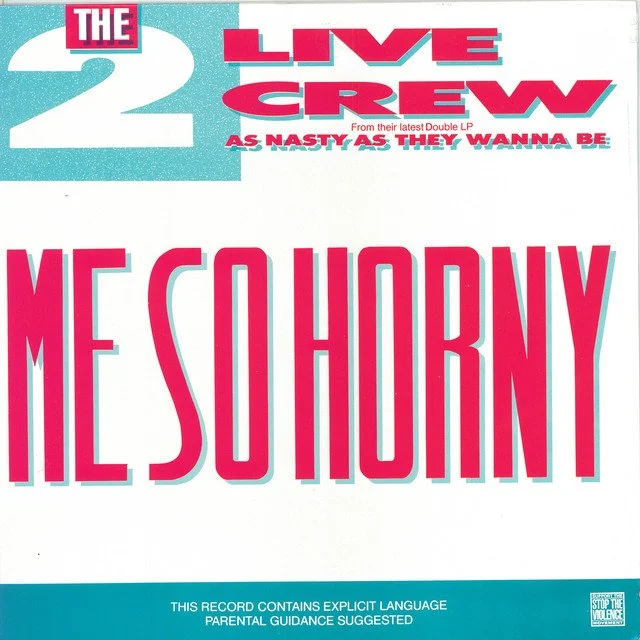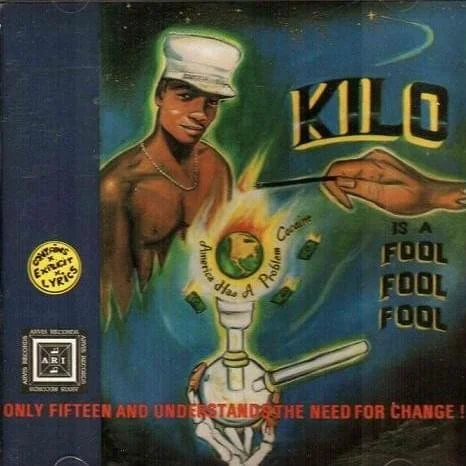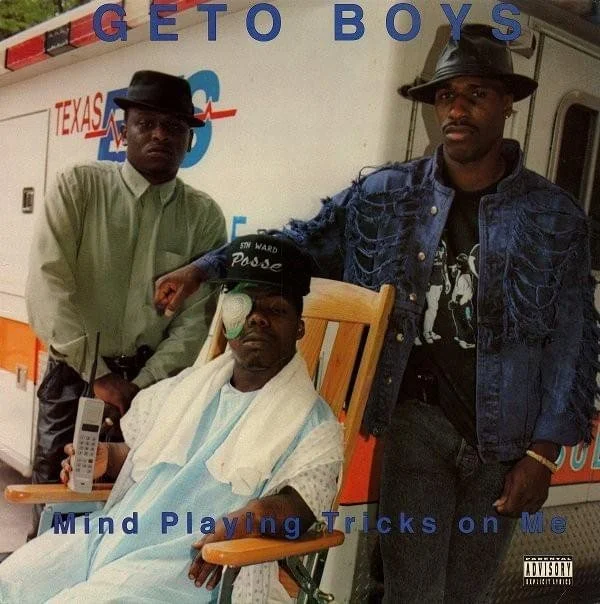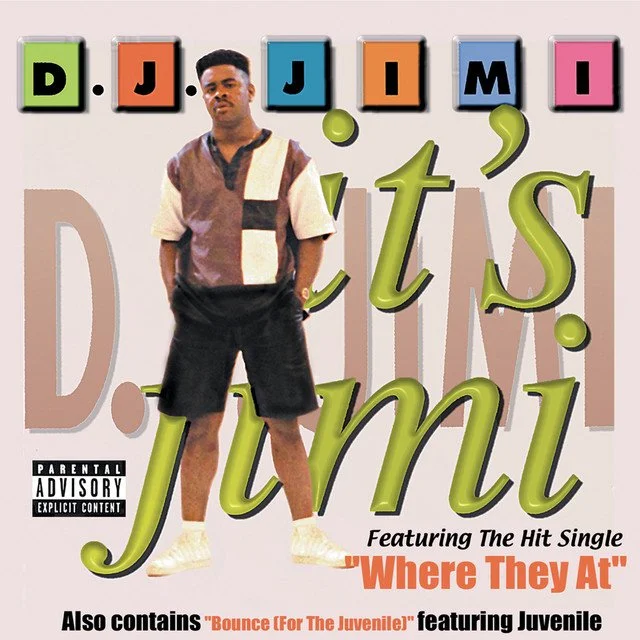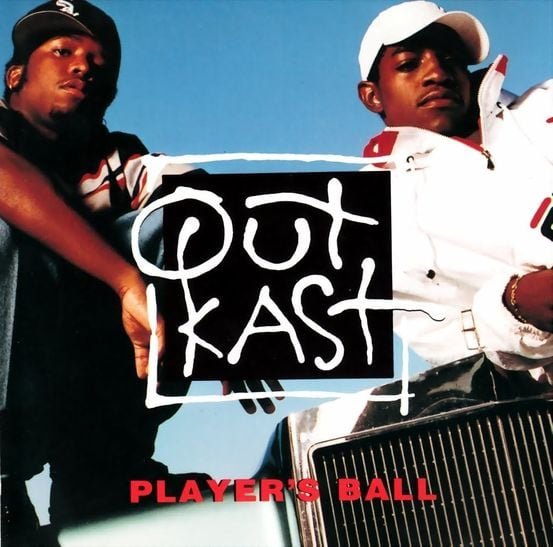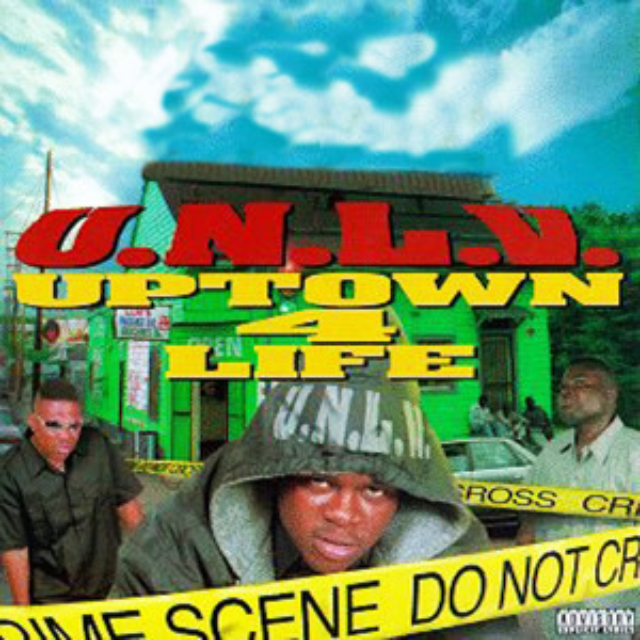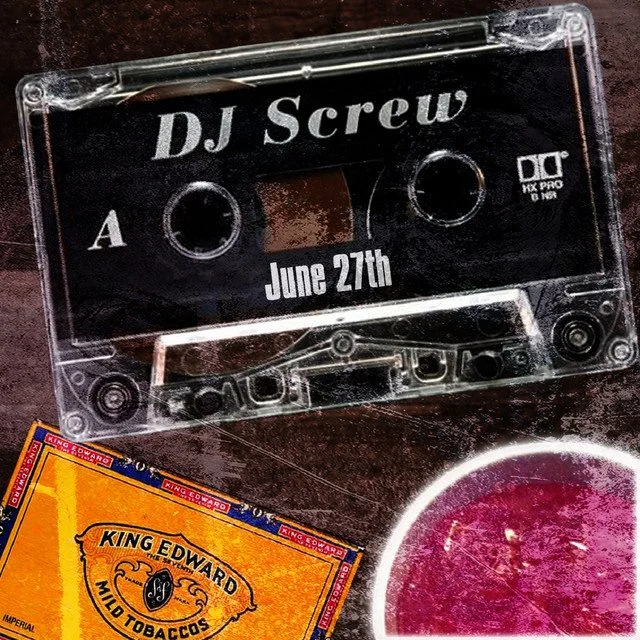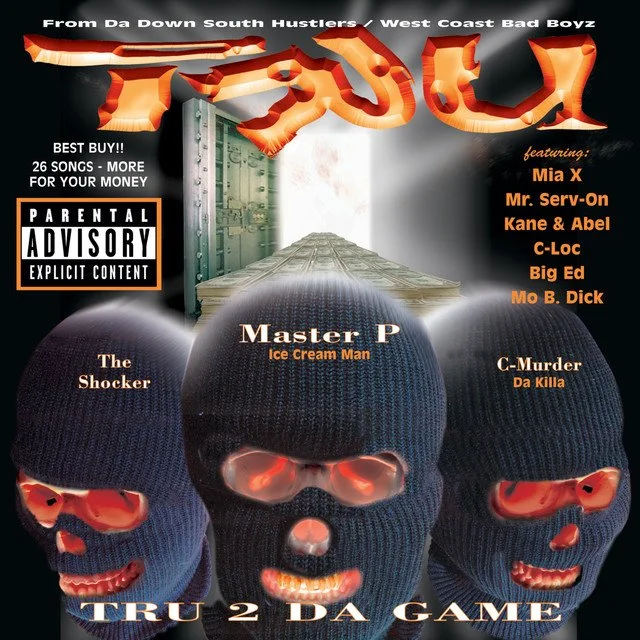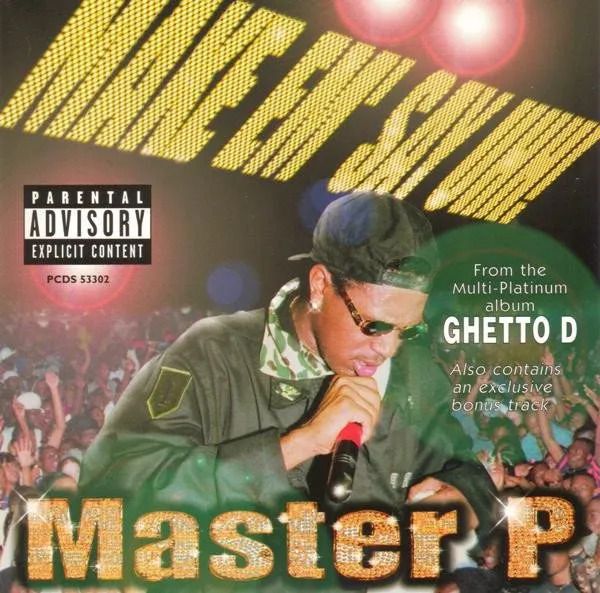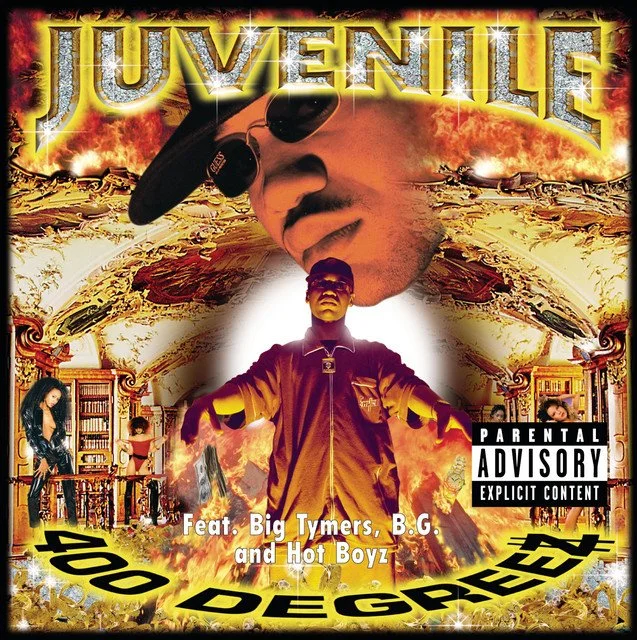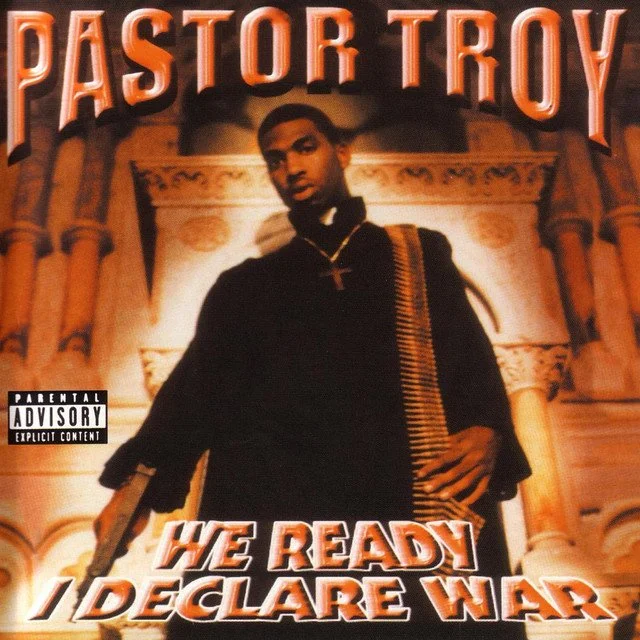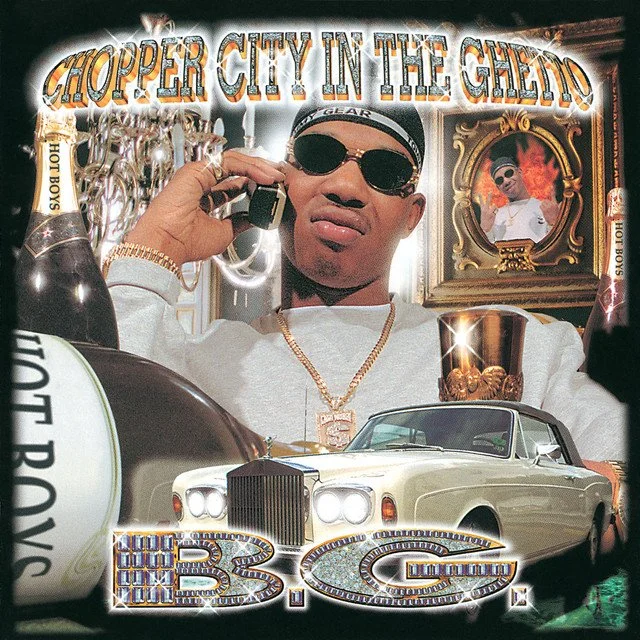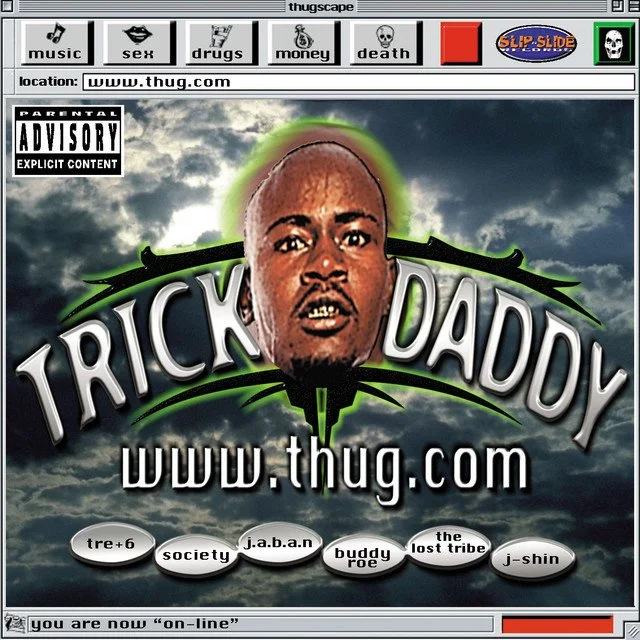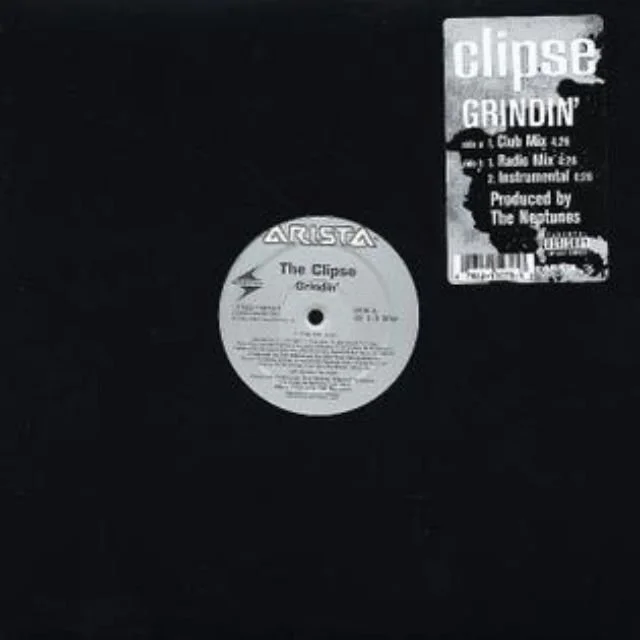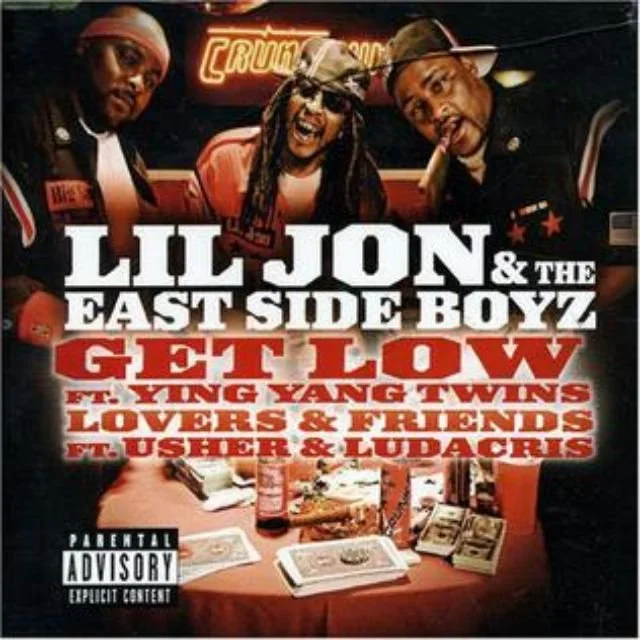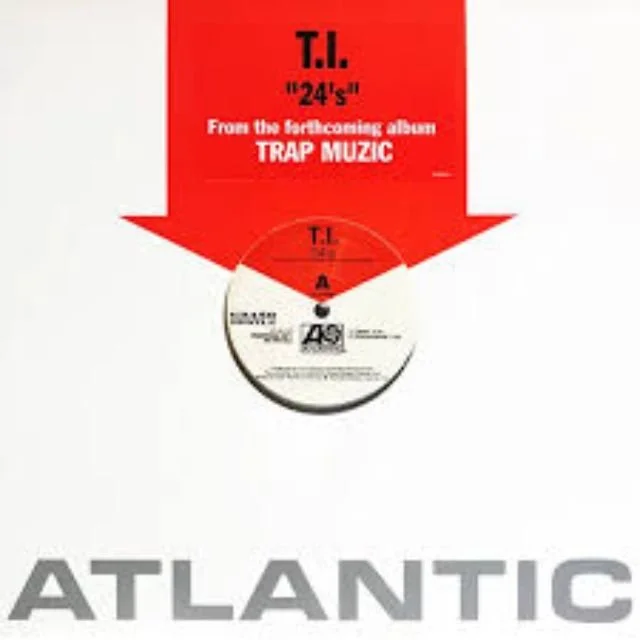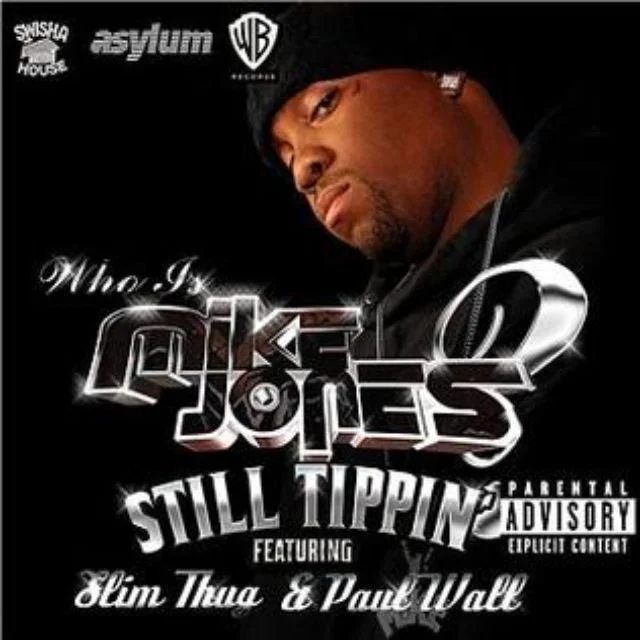30 Greatest Southern Rap Songs
Last December Pitchfork put out a list of what they thought was the best Southern Rap songs of the 1990s, in my opinion it was a solid list, however it got me thinking. What is the best Southern rap songs of all time, not just the 90s. So I chose to set out and figure it out, it was a difficult task and it took a lot of time, however now I genuinely think I have a good solid list. It’s a list that I believe are the most impactful records to come out of the South. There are a couple of things I need to note before we get into the list.
I have counted Virginia as the South. Recently I have learnt that Virginia is a part of the South, other lists regarding the South have included Virginia. Now I personally have never thought Virginia was a part of the South, at least not from a cultural perspective. However, I have chosen to add Virginia so that I don’t disrespect anyone from the state who identifies as a Southerner.
To have better representation, I have chosen to only add one song per artist. So don’t expect multiple OutKast songs or multiple UGK songs.
This list isn’t ranked, it’s in order of when the songs came out.
Now let’s get into the list.
2 Live Crew - Me So Horny (1989)
Miami, FL
Saying that this song created controversy is an understatement. This song led to rap lyrics being put under the microscope, as criticism was drawn to explicit lyrics within rap music. Due to the controversy, the song and the groups album “As Nasty As They Wanna Be” charted high on the charts. However, the group was prosecuted on obscenity charges, anyone selling the song or the group’s album was charged and the group itself was arrested for performing the song. “Me So Horny” is a representation of everything that 2 Live Crew and specifically group member Uncle Luke had to go through in order for Hip-Hop artists to still keep their freedom of speech within rap music. In 1992 Luke won a court case to rule out 2 Live Crew as an obscene group, however it wasn’t just a win for 2 Live Crew, it was a win for Hip-Hop.
Kilo Ali — Cocaine (1990)
Atlanta, GA
An Atlanta classic, Kilo Ali was the first rapper out of Atlanta to play on the radio. Kilo helped kick the door down for other Atlanta rappers that followed, if it weren’t for him the great rappers that we heard from the “A” would cease to exist. If Atlanta as a city has a huge influence on Hip-Hop, then the song that started it all has to be on this list.
Geto Boys — Mind Playing Tricks On Me (1991)
Houston, TX
Geto Boys’ 1991 classic “Mind Playing Tricks On Me” is another song that helped the South get some shine for the first time. By 1991, the East Coast had damn near all the attention and the West Coast finally made a mark with acts such as N.W.A. and Ice-T. The Geto Boys helped bring attention to the South to show that there were great MCs in the South too. Probably the first rap song to discuss mental health, without realising it. “Mind Playing Tricks On Me” tells the story of the dark side of the streets, as all three Geto Boys members; Scarface, Willie D and Bushwick Bill, spit verses about paranoia, anxiety and hallucinations. Due to it’s content and the feeling of what the song gives you, it’s suggested that this song was the foundation of the Horrocore sub-genre. Overall, “Mind Playing Tricks On Me” isn’t just a Southern classic, it’s a classic Hip-Hop record.
DJ Jimi — Where They At (1992)
New Orleans, LA
Bounce music is the most important part of New Orleans’ Hip-Hop scene. DJ Jimi’s “Where They At” samples The Showboys’ 1986 single “Drag Rap, also known as the “Triggerman” beat. The beat was used and sampled by various New Orleans artists which led to the birth of Bounce music, most famously TT Tucker and DJ Irv. However, DJ Jimi is credited with polishing the record and popularising it. The song’s influence can still be heard to this day with its beat and chants, for example “Church Girl” by Beyoncé on her critically acclaimed album “Renaissance” which was released last year.
8Ball & MJG — Mr. Big (1993)
Memphis, TN
“Comin’ Out Hard” is an essential Southern classic, similar to the records mentioned prior it helped with putting a spotlight on the respective city it came out of, that being Memphis, which is the home city of other acts such as Three 6 Mafia, Young Dolph and Yo Gotti. “Mr. Big” may not be 8Ball and MJG’s biggest record, but it’s one of the best records off their debut album. The record only consists of verses from 8Ball, as he tells the tale of his rise to the top of the food chain within the streets. Similar to “Mind Playing Tricks On Me”, it was another early example that the South had talented rappers similar to the East and West coast.
Scarface — I Seen A Man Die (1994)
Houston, TX
Another entry from Scarface, but this time it’s just from him. “I Seen a Man Die” follows a similar blueprint to “Mind Playing Tricks On Me”, as the song focuses on the negative and dark sides of a life in crime. On the other hand, “I Seen A Man Die” is arguably more tragic, as it tells the tale of a man who is released from prison hoping to not stray back into a life of crime, however he does and in the end dies from his wounds after being shot. The song is more than just a tragic tale, as it’s a reflection of the issues within urban and ghetto life. How even when trying to go legit and live a normal life can be difficult, with the lure of crime and the difficulty of facing limited alternative options. Storytelling wise, it’s one of the best you will hear from a rapper and is an example as to why Scarface is one of the greatest rappers of all time.
OutKast — Player’s Ball (1994)
Atlanta, GA
There were multiple tracks to choose from OutKast, but none of them are as impactful when compared to their first single, it’s the song that put Atlanta on the map. Both Big Boi and Andre were repping Atlanta to the fullest and showed the world where they come from. It also introduced the world to the amazing productions of Organized Noize, who went on to produce legendary records, such as “Waterfalls” for TLC. With the success of the song and their debut album, “Southernplayalisticadillacmuzik”, OutKast won “Best New Artist” at the legendary 1995 Source Awards. Whilst receiving boos by the crowd, Andre 3000 famously said to the crowd “the south got something to say”. From that point on it lit a fire in the South, as if Andre warned and predicted that the South would take the spotlight at some point and the South did. None of that would of occurred or would have been possible without the duo’s debut single.
Goodie Mob — Cell THerapy (1995)
Atlanta, GA
Another classic debut single produced by Organized Noize, “Cell Therapy” starts with haunting piano keys that is instantly recognisable when it’s played. Similar to that one piano key on Kanye West’s “Runaway”. It’s a phenomenal track from the group, as Goodie Mob dives deep into the paranoia garnered from conspiracy theories. It was a difficult choice between “Cell Therapy” and another single off the same album, “Dirty South”. In the end, I couldn’t ignore the brilliance of this record, from its lyrics, content to its production.
U.N.L.V. — Drag ‘Em N Tha River (1996)
New Orleans, LA
When we think about Cash Money Records, we think about Lil Wayne, Juvenile and the Hot Boys, even Drake and Nicki Minaj. However, Cash Money’s success may of not have occurred if they didn’t have U.N.L.V.. A trio from New Orleans, who helped Cash Money gain initial success and perhaps their biggest record is a diss song, to fellow New Orleans rapper Mystikal. The beat consists of classic production from legendary New Orleans producer Mannie Fresh. The beat is so good, that it was re-used for Juvenile in 2001, for his single “Set It Off”. Without the success of “Drag ‘Em N Tha River” and U.N.L.V., it could be argued that Cash Money may not have been able to sign the acts that took Cash Money to next level.
DJ Screw — June 27 (1996)
Houston, TX
The story and legacy of DJ Screw is a rare case, the man has gotten bigger and more impactful over the two decades on from his unfortunate passing. Screw’s influence can be seen throughout music, as his sound has influenced various artists, from the likes of Drake, Future and A$AP Rocky. The term "Chopped N Screwed” is still used to this day when artist re-release their albums and songs and slow down their music. June 27 is a classic cut and the most well known track from Screw’s mixtapes. It’s a 36 minute behemoth where multiple legendary Houston rappers freestyle over a chopped up and slowed down sample of Kriss Kross’ 1996 album cut “Da Streets Ain’t Right”.
TRU — No Limit Soldiers (1997)
New Orleans, LA
Out of all records from TRU that would make this list, people would be expecting “I’m Bout it, I’m Bout It” and I almost added it. As much as I love the song, it doesn’t sound like a New Orleans record, its sound is inspired by West Coast G-Funk. Instead I’ve gone for another TRU record that hits just has hard as “I’m Bout it, I’m Bout It”. Produced by legendary Beats By the Pound member, KLC, who is behind the production works of records such as Ludacris’ “Move Bitch” and many other classic No Limit records, “No Limit Soldiers” is the best song on a very essential No Limit album. The album was a shift in change for No Limit, as the West Coast sound mentioned prior was replaced with a more New Orleans feel. Plus, it helped create even more exposure for Master P’s two younger brothers, Silkk the Shocker and C-Murder. “No Limit Soldiers” is the second track off the double album, and is still capable of getting a crowd going 26 years on from its release.
Missy Elliott — The Rain (1997)
Portsmouth, VA
If I’m counting Virginia, then I have to include this legendary and innovative rapper right here. When Missy Elliott and Timbaland introduced their sound to the world with “The Rain”, it swiped listeners off their feet. The production was different, the music video was different and Missy’s use of sound effects within her verses was different. Missy is one of the most innovative artists to touch the mic, pushing Hip-Hop to new sounds and looks. Her influence is clear, especially when you hear rappers such as Lil Wayne who cites Missy as one of his favourite rappers and a major influence within his music.
Master P — Make ‘Em Say Ugh (1997)
New Orleans, LA
Master P was on a run in 1997 and with the success of TRU’s double album, “True 2 Da Game”, Master P opted to not slow down. Nine months after the release of the double album, P dropped his own double album, “Ghetto D”, which many consider the crown jewel of No Limit albums. The 12th track, “Make ‘Em Say Ugh”, is one of the best posse cuts in Hip-Hop. All the verses from the record are energetic and animated, but Mystikal steals the show with the best verse. After the song was released as a single it peaked at number 16 on the Billboard charts, and with the success of Ghetto D and other releases from No Limit artists, No Limit cemented themselves as one of the biggest labels in Hip-Hop.
Three 6 Mafia — Tear Da Club Up ‘97 (1997)
Memphis, TN
When we talk about the most impactful Hip-Hop groups, Three 6 Mafia’s impact can go toe to toe with many other groups. They are probably one of the most sampled Hip-Hop acts and their style has influenced many others and it’s also been mimicked by many others. On their 1995 debut album, “Mystic Stylez”, the group had a track called “Tear Da Club” and this was remixed two years later, with new verses and even though the beat sounds the same the 1997 version sounds more hard hitting. This track is an early example of what became Crunk music, that went on to become it’s own phenomenon with artists such as Lil Jon. It’s also worth mentioning that the song was banned in nightclubs throughout the South for inciting riots, I guess people took the song title a little too seriously.
Lil’ Troy — Wanna Be A Baller (1998)
Houston, TX
By 1998, the only rapper out of Houston to have a platinum album was Scarface. However, that all changed when Lil’ Troy released his debut album “Sittin’ Fat Down South”. The album’s biggest single, “Wanna Be A Baller” actually doesn’t consist of a single verse from Troy. The track features verses from Fat Pat, Big Hawk, Lil’ Will and Yungstar, with Big T singing the famous chorus. The song tends to come across as an ode to Houston and it’s car culture.
Gangsta Boo — Where Dem Dollas At (1998)
Memphis, TN
Gangsta Boo has a huge impact for women in the South, as member of Three 6 Mafia she took advantage when it was her turn for a solo project. Sonically, “Where Dem Dollas At” was a move away from the dark and crunk style beats used in Three 6 Mafia’s music. DJ Paul and Juicy J instead provided Boo with a more laidback instrumental, where she shines lyrically and steals the show with her powerful voice. Gangsta Boo opened the door for other Southern women that came after her. Upon finishing the final draft of my list, Gangsta Boo unfortunately passed away a few days later. I was completely shocked and saddened to hear about her passing. R.I.P. Gangsta Boo, The Queen of Memphis.
Juvenile — Back That AZZ Up (1998)
New Orleans, LA
Bounce music was already a staple within New Orleans, but with “Back That Azz Up”, Juvenile took it to mainstream America. Along with B.G.’s “Bling Bling”, Lil Wayne’s “Tha Block Is Hot” and Hot Boys’ “I Need A Hot Girl”, “Back That Azz Up” helped Cash Money gain major recognition as a label. Additionally, with the success of Juvenile’s “400 Degreez” album, Cash Money was finally able to compete with No Limit who at the time was the main staple of New Orleans. “Back That Azz Up” is still played to this day and still garners the same euphoric reaction when it comes on in 2023 as it did in 1998. Even with Cash Money going on to have even more success with Lil Wayne, Drake and Nicki Minaj, Juvenile’s biggest single is still the most important single within Cash Money’s catalogue. Credit should also be given to Mannie Fresh for the iconic beat and to Lil Wayne for popularising the expression “drop it like it’s hot”.
Pastor Troy — No Mo Play In G.A. (1999)
ATLanta, GA
Towards the end of the 1990s, New Orleans was the focal point when it came to Southern Hip-Hop. Both Cash Money and No Limit gained huge amounts of success and national exposure, plus both labels would release huge amounts of work. No Limit alone released 23 albums within 1998. Even on my own list, I have mentioned five New Orleans records between 1996 and 1999. Besides OutKast and Goodie Mob, the state of Georgia was struggling to compete and I guess this struck a nerve with Pastor Troy. Coming out of nowhere Pastor Troy dissed Master P, asking for war. “No Mo Play In G.A.” was Pastor Troy’s way of saying he was sick of watching New Orleans’ success and wanted the attention on Georgia. It could be argued that Pastor Troy spoke what he wanted into existence, as by the turn of the millennium Atlanta began their dominance within Hip-Hop with acts such as Ludacris, T.I. and Jeezy. “No Mo Play In G.A.” has become a record that represents pride for Georgians.
B.G. — Bling Bling (1999)
New Orleans, LA
Another record that helped continue Cash Money and New Orleans’ dominance. Lil Wayne already helped popularise “drop it like its hot”, but he took it a step further by creating a new word that is now in the dictionary, “Bling”. “Bling Bling” by B.G. is the one of best records ever when it comes to stuntin’. It’s crazy to think that besides Juvenile, all of the the Hot Boys were teenagers at the time, all four of them not knowing that the music that they were making was going to be so impactful.
Trick Daddy — Nann (1999)
Miami, FL
Besides 2 Live Crew and Luke, Miami didn’t have any other artists that made a huge impact outside of Florida. Until Trick Daddy and Slip-n-Slide records came along, “Nann” which is the lead single off of Trick’s second LP helped push Miami back into the mainstream, especially for the 2000s. The track introduced the world to Trina, who went on to become hugely influential and it also helped Slip-n-Slide records gain chart success; to which the record label went on to sign not only Trina, but another successful Miami artist by the name of Rick Ross.
Project Pat — Out There (1999)
Memphis, TN
Affiliated, but was never an official member of Three 6 Mafia, Project Pat is an artist who doesn’t fully get the flowers he deserves, or at least he is just starting to. Similar to the group, his style is incredibly influential and it has been mimicked too. “Out There” is a fantastic album cut off of Pat’s debut album, “Ghetty Green”, and if there is one song the defines Pat in terms of his style, flow and influence it’s “Out There”. Just go and listen to Drake’s verse on BlocBoy JB’s “Look Alive”, he uses Pat’s flow and cadence, the same flow and cadence you hear in “Out There”, in addition to that Drake’s first four bars are the same bars that Pat raps.
Trina — Da Baddest Bitch (1999)
Miami, FL
Already making a name for herself and raising eyebrows with how sexually explicit she was on Trick Daddy’s “Nann”, Trina took it to a whole new level with her solo debut single “Da Baddest Bitch”. Similar to Gangsta Boo, Trina is another leading lady that helped pave the way for female rappers from the South. Trina’s impact was immediate as her debut album was a commercial success, and she went on to become even more successful during the 2000s. All of that wouldn’t have been possible without her debut single.
Clipse — Grindin’ (2002)
Virginia Beach, VA
Clipse’s “Grindin’” is one of the most impactful and iconic Hip-Hop records within the last two decades, from it’s beautiful production from The Neptunes to the fact that it was the world’s proper introduction to both Pusha T and No Malice (formerly known as Malice). It’s known that Pharrell almost gave the beat to Jay-Z, and it begs the question, if that happened would the duo have had the success that they did? I don’t think so. “Grindin” was the first single off of the duo’s major label debut “Lord Willin”, however it wasn’t their first project as three years prior they failed to make much buzz with their first album “Exclusive Audio Footage”. Clipse needed “Grindin” and without it we may have not had Clipse’s following albums, mixtapes nor their solo works.
Lil Jon & The East Side Boyz — Get Low (2002)
Atlanta, GA
The 2000s saw the rise and complete dominance of Atlanta, and one of the biggest reasons was the commercial success of Crunk music. The start and foundation of Crunk music started in the ‘90s, and Lil Jon & The East Side Boyz took it to the mainstream within the early ‘00s, with the help of “Get Low”. “Get Low” is its own phenomenon as it went against the norm of what a “mainstream” song is suppose to sound like. Lil Jon’s production was unique and didn’t sound like anything else, as “Get Low” consisted of electronic synths and 808s together. Crunk music became huge and Jon’s production was so in demand, as he continued to produce hits even for other artists, bringing his signature sound to the R&B world for artists such as Usher (“Yeah”) and Ciara (“Goodies”).
T.I. — 24s (2003)
Atlanta, GA
Trap music has become one of the biggest and most successful sub-genres within Hip-Hop. The term “Trap” has existed well before the rise of the sub-genre, but the term “trap music” was popularised and introduced to the mainstream by T.I.. TIP’s second album “Trap Muzik” and records such as the lead single “24s” helped lay the first building blocks for Trap music, which helped introduce other early important figures in the genre, artists from the likes of Jeezy and Gucci Mane. Trap music has reinvented itself over the years and its success is the reason as to why Atlanta has continued to be the most important city in Hip-Hop over the last two decades. The sub-genre has influenced rappers, producers and artists outside of Hip-Hop. We have to thank T.I. and classic singles such as “24s” for that.
Lil Wayne — Go DJ (2004)
New Orleans, LA
During the height of the Hot Boys, Juvenile and B.G. were the biggest and the most popular members of the group. Though Lil Wayne provided important moments, such as popularising words and phrases, and having a platinum album with "Tha Block Is Hot", still no one expected Weezy to have the career that he did. With the success that Cash Money had in the late 90s, financial disputes led to Juvenile, B.G. and Turk leaving the label and the label was struggling. Wayne however stuck around and it paid off with his fourth studio album, “Tha Carter”. With the album, lyrically and creatively Weezy reached a new level that no one expected and “Go DJ" the second single off the album became Wayne's highest charting single at that point. With the success of the album and the single, it kicked off Wayne’s monstrous run within the 2000s. With the success of the “Tha Carter” and “Go DJ”, Wayne kept Cash Money’s lights on, and went on to become one of the biggest and most influential rappers of all time.
Mike Jones — Still Tippin’ (2004)
Houston, TX
Though Atlanta became the number one city in Hip-Hop by the mid-2000s, Houston competed with that title for just a brief period. Between 2004 and 2005, Houston was turning out great records and was gaining national commercial success. A lot of that has to with the success of Mike Jone’s “Still Tippin’”, which features fellow Swishahouse members Slim Thug and Paul Wall. The song sonically is slow and laidback, which is Houston’s signature sound, introduced and popularised by DJ Screw. All three artists shine equally, as the chorus samples a previously released Slim Thug freestyle. The song’s success helped push Houston’s new rap scene to gain huge amounts of exposure. All three artists on the record charted in the top 3 with their respective albums, and even Bun B a veteran and legend gained his first solo success in 2005 with his debut album “Trill”.
Jeezy — Trap Or Die (2005)
Atlanta, GA
Along with T.I., Jeezy is another important figure in trap music's history. As T.I. and producer DJ Toomp were making influential trap music with records such as “24s” and “Rubber Band Man”, Jeezy and producer Shawty Redd were also doing the same thing and Jeezy's classic mixtape cut 'Trap or Die" is an example of that. Featuring legendary UGK member, Bun B, the two rappers rap over hard hitting 808s that is synonymous with trap music. The song is a track off of Jeezy's DJ Drama hosted Gangsta Grillz mixtape of the same name, and helped push DJ Drama closer to the throne as “King of Mixtapes”. The track was so good that it was also put on Jeezy's debut album, "Thug Motivation: 101", which is regarded as one of the best trap albums of all time.
UGK — International Players Anthem (I Choose You) (2007)
Houston, TX
Similar to OutKast, I could of chosen multiple UGK records. From Pocket Full Of Stones off of their debut album, to the multiple choices I had from their third album "Ridin’ Dirty". However, their classic single "International Players Anthem" couldn't be ignored. Featuring OutKast and produced by DJ Paul and Juicy J from Three 6 Mafia, the song comes off as a celebratory track for the South. The track consists of work put in by three of the most influential southern acts, UGK, OutKast and Three 6 Mafia. It’s is a representation of how far the South came, from not being respected to being now the focal point in Hip-Hop.
Waka Flocka Flame — Hard In Da Paint (2010)
Atlanta, GA
A highly influential track that incorporated elements of Crunk music and re-invented trap music, both Waka and producer Lex Luger influenced the sound of Hip-Hop and most importantly trap music for the rest of the decade. Lex Luger’s production style and sound, is arguably the reason that helped Atlanta continue their dominance within Hip-Hop for another decade. Waka and Lex, along with producer Southside founded 808 Mafia, a production team with members that went on to produce huge records for artists such as Future, Drake and Rick Ross.


